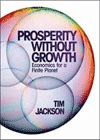Predicting UK household expenditure and associated GHG emissions: outlook to 2030
Overall aims
In order to help move towards more sustainable consumption and lower emissions in the future, this project attempted to predict disaggregated UK household expenditure and their associated direct and indirect greenhouse gas (GHG) emissions.
Context
The UK target for emissions reduction set by the Committee on Climate Change is based upon a ‘production perspective’. This has considerable implications not only for the structure of UK production but also for the amount and structure of UK consumption of goods and services. Since household consumption is responsible (directly or indirectly) for a considerable amount of UK emissions, it is important to analyse this issue from the ‘consumption perspective’. If UK household consumption were to grow in a similar way to the pattern of the past couple of decades this will in all probability result in even higher levels of GHG emissions. So there are strong arguments in favour of a significant change in policy and intervention by government in order to attempt curtail future consumption.Research Questions & Methods
The key question the project addressed was: which categories of goods and services have higher expenditure and higher associated GHG emissions in the future?
The RESOLVE model of Econometric, Lifestyle, Environment, Scenario Analysis (ELESA) was developed to answer the above question. The estimated expenditure functions in ELESA were used to build future expenditure scenarios for each category until 2030. To do this, a ‘reference’ scenario is constructed using assumptions for future real household disposable income, prices, trend and temperature, with ‘high’ and ‘low’ scenarios built around this. This gave projections of future expenditure up to 2030 under the three different scenarios and using the similar approach and assumptions for GHG intensities, future GHG emitted by households. Furthermore, this identified the highest GHG emissions associated with the related household consumption categories to help better planning and policy formulation for future GHG mitigation.
Results
The scenarios suggest that total household expenditure and hence GHG emissions will continue to increase until 2030. This implies that the UK will not meet its target, in terms of a ‘consumption perspective’ of GHG emission reduction at least by 2030 unless appropriate interventions and policies are applied. Furthermore, In order to move towards future GHG mitigation the focus should be on the consumption categories with the highest and increasing pattern of associated GHG emissions. Accordingly, the highest GHG emissions in 2030 will be those concerned with the transportation sector (the categories ‘other transport’ and ‘vehicle fuels and lubricants’), ‘gas’ and ‘miscellaneous goods and services’. Furthermore, it is found that exogenous non-economic factors have a relatively high contribution driving the changes in expenditure in the above mentioned categories and could therefore likely to be the most effective tool to affect household expenditure and emissions.
Implications
In order to achieve more sustainable consumption and GHG reduction, policy makers might focus on categories of household expenditure associated with high emissions in the future. They might consider non-economic policies and interventions that attempt to influence household lifestyles, behaviours and environmental awareness. Of course, beside such policies, economic incentives of price increase through (carbon) taxes should carefully be considered; keeping in mind the negative side effects of such policy i.e. price increase in other associated sectors, reduction in consumer welfare and poverty.
Output
Chitnis, M and L C Hunt 2009. What drives the change in UK household energy expenditure and associated CO2 emissions, economic or non-economic factors? RESOLVE Working Paper Series 08-09. Guildford: University of Surrey.
Chitnis, M and L C Hunt 2012. What drives the change in the UK household energy expenditure and associated CO2 emissions, economic or non-economic factors? Applied Energy 94: 202-214.
Chitnis, M, A Druckman, L C Hunt, T Jackson and S Milne 2012. Forecasting UK household expenditure and associated GHG emissions: outlook to 2030. RESOLVE Working Paper Series 02-12. Guildford: University of Surrey.





